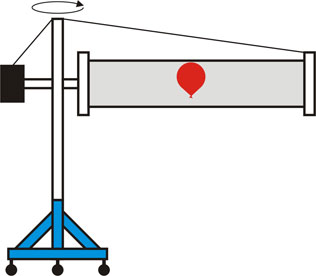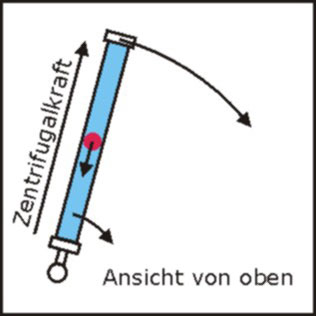A large horizontal Perspex tube is empty and contains only air. In it is a helium balloon which would ordinary travel upwards. The horizontal tube can be rotated around a vertical axis at its end. When the balloon is in the middle of the tube, what happens when the tube is rotated? Does the balloon move to the inside, the outside, or stay put?
And what happens if you do the same test with the ends of the tube removed?
How does it work?
The balloon moves inwards in both cases! The air in the tube and the balloon both experience centrifugal forces towards the outside (if you were to sit on the tube, you’d feel an outward force similar to that on a carousel). Imagine this centrifugal force is like an artificial gravity, which acts not downwards but in the outside direction of the tube. You can imagine the air in the pipe forms its atmosphere. The helium balloon is still lighter than the air and floats “upwards” from the ground, in this case towards the inside of the tube.
When the tube is open ended, the pressure in the pipe corresponds to the ambient air pressure, however the pressure inside is still made lower by the tube rotation, causing the balloon to be driven inwards.






























































































